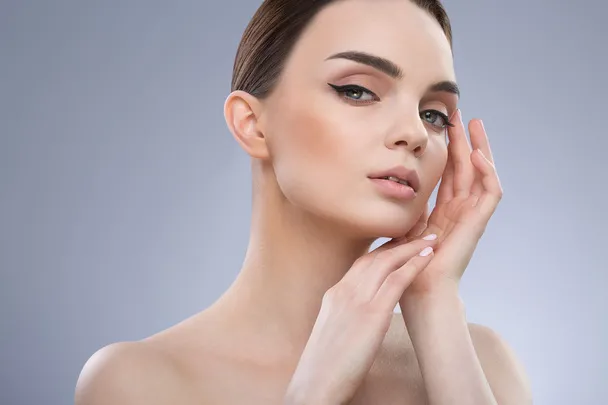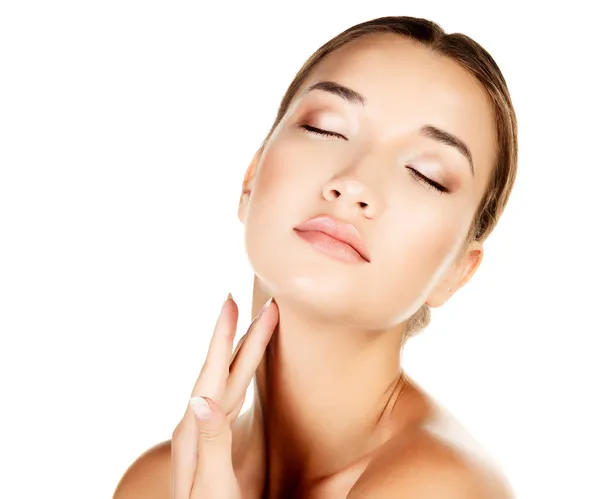Sun exposure is a significant contributor to skin damage, causing a range of issues from premature aging to an increased risk of skin cancer. Understanding the signs of sun-damaged skin is crucial for maintaining skin health and taking proactive measures to protect against further damage. Here are some key signs to be aware of Sunburn:
Sunburn is a common consequence of overexposure
ultraviolet (UV) radiation from the sun or artificial sources like tanning beds. It is characterized by red, painful, and inflamed skin, typically occurring within a few hours of excessive sun exposure. When the skin is exposed to UV radiation, it triggers a series of reactions that lead to inflammation, dilation of blood vessels, and damage to skin cells.
The severity of sunburn can vary depending on factors such as skin type, duration of exposure, and intensity of UV radiation. Mild sunburn may cause discomfort and redness, while more severe cases can lead to blistering, swelling, and even systemic symptoms such as fever and chills.
In addition to immediate discomfort, sunburn can have long-term consequences for skin health. Repeated episodes of sunburn can accelerate skin aging, leading to wrinkles, fine lines, and pigmentation changes. Moreover, excessive UV exposure increases the risk of skin cancer, including melanoma, the deadliest form of skin cancer.
Preventing sunburn is essential for maintaining skin health and reducing the risk of long-term damage. This can be achieved by practicing sun safety measures such as wearing protective clothing, seeking shade during peak sun hours, and applying sunscreen with a high sun protection factor (SPF). Regular skin checks and professional dermatological evaluations can also help detect and address sun damage and skin cancer in its early stages.
Uneven Pigmentation:
Uneven pigmentation, or hyperpigmentation, is a common sign of sun-damaged skin that results from prolonged exposure to ultraviolet (UV) radiation from the sun. UV radiation triggers an increase in melanin production, the pigment responsible for giving skin its color. When melanin production becomes irregular or excessive, it can lead to the development of dark spots, freckles, or age spots on areas of the skin that have been exposed to the sun.
Hyperpigmentation typically appears as localized patches of darker skin tone and can vary in size, shape, and intensity. Common areas affected by hyperpigmentation include the face, hands, arms, chest, and shoulders, which are frequently exposed to sunlight.
Over time, untreated hyperpigmentation can become more pronounced and widespread, leading to a blotchy or mottled appearance and contributing to an uneven complexion. In addition to sun exposure, other factors such as hormonal changes, inflammation, and certain medications can exacerbate hyperpigmentation.
Preventing and managing hyperpigmentation requires a multifaceted approach that includes sun protection, skincare, and professional treatments. Sunscreen with a high sun protection factor (SPF) should be applied daily to protect the skin from UV radiation and prevent further pigmentation. In addition, wearing protective clothing, seeking shade, and avoiding peak sun hours can help minimize sun exposure.
Skincare products containing ingredients such as niacinamide, vitamin C, retinoids, and alpha hydroxy acids (AHAs) can help fade existing hyperpigmentation and inhibit melanin production. These ingredients work by promoting cell turnover, inhibiting melanin transfer, and brightening the skin tone.
For stubborn or severe hyperpigmentation, professional treatments such as chemical peels, microdermabrasion, laser therapy, or intense pulsed light (IPL) therapy may be recommended. These treatments target pigmented lesions and stimulate skin renewal, resulting in a more even complexion.
Wrinkles and Fine Lines: Exposure to UV radiation from the sun is a primary contributor to the formation of wrinkles and fine lines, two common signs of sun-damaged skin. UV radiation penetrates the skin and triggers a series of biochemical reactions that accelerate the aging process, leading to the breakdown of collagen and elastin fibers in the skin.
Collagen and elastin are structural proteins responsible for maintaining the skin’s strength, elasticity, and firmness. When exposed to UV radiation, these proteins degrade more rapidly, causing the skin to lose its resilience and youthful appearance. As collagen fibers weaken, the skin becomes thinner and less able to retain moisture, resulting in the formation of wrinkles and fine lines.
Wrinkles are characterized by creases, folds, or ridges in the skin’s surface, typically appearing in areas of repetitive facial movement such as the forehead, around the eyes (crow’s feet), and mouth (smile lines). Fine lines, on the other hand, are smaller, shallower creases that may develop on the cheeks, under the eyes, or on the neck.
Over time, prolonged sun exposure can exacerbate the development of wrinkles and fine lines, making them more pronounced and visible. Additionally, other factors such as smoking, pollution, and genetics can contribute to premature aging and the formation of wrinkles.
Preventing and minimizing wrinkles and fine lines caused by sun damage requires a comprehensive approach to sun protection and skincare. Daily application of broad-spectrum sunscreen with a high SPF is essential to shield the skin from UV radiation and prevent further collagen damage. Protective clothing, hats, and sunglasses can provide additional protection from the sun’s harmful rays.
Incorporating skincare products containing antioxidants, retinoids, peptides, and hydrating ingredients can help repair and regenerate the skin, reducing the appearance of wrinkles and fine lines. Antioxidants neutralize free radicals generated by UV radiation, while retinoids stimulate collagen production and promote cell turnover. Peptides and hydrating ingredients help hydrate the skin and improve its overall texture and resilience.
For advanced or persistent wrinkles and fine lines, cosmetic procedures such as injectable fillers, botulinum toxin (Botox) injections, laser resurfacing, and microneedling may be recommended to restore volume, smooth wrinkles, and rejuvenate the skin’s appearance.
By adopting a proactive approach to sun protection and skincare, individuals can minimize the effects of sun damage on their skin, including wrinkles and fine lines, and maintain a youthful and radiant complexion for years to come.
Dryness and Rough Texture:
Dryness and rough texture are common manifestations of sun-damaged skin, often characterized by a lack of moisture and a compromised skin barrier. UV radiation from the sun can disrupt the skin’s natural balance, leading to increased water loss and dehydration.
The outermost layer of the skin, known as the stratum corneum, acts as a protective barrier that helps retain moisture and prevents irritants, allergens, and pathogens from penetrating the skin. However, prolonged exposure to UV radiation can weaken this barrier, compromising its ability to function effectively.
As a result, the skin may lose its ability to retain moisture, leading to dryness, roughness, and flakiness. Dehydrated skin lacks the necessary water content to maintain its suppleness and elasticity, resulting in a dull and lackluster complexion.
In addition to water loss, UV radiation can also trigger inflammation and oxidative stress in the skin, further exacerbating dryness and rough texture. Inflammatory mediators released in response to UV exposure can disrupt normal skin cell turnover, leading to a buildup of dead skin cells on the surface of the skin.
To address dryness and rough texture associated with sun-damaged skin, it’s essential to prioritize hydration and reinforce the skin’s natural barrier function. This can be achieved through a combination of skincare products and lifestyle modifications:
- Hydrating Skincare Products: Choose gentle cleansers, moisturizers, and serums formulated with hydrating ingredients such as hyaluronic acid, glycerin, ceramides, and fatty acids. These ingredients help replenish moisture, soothe dryness, and improve the skin’s texture and resilience.
- Sun Protection: Protect the skin from further damage by applying broad-spectrum sunscreen with a high SPF daily, even on cloudy days or during winter months. Sunscreen helps prevent UV-induced dryness and roughness by shielding the skin from harmful UV radiation.
- Humidifiers: Use a humidifier in your home or office to maintain optimal humidity levels and prevent moisture loss from the skin. Humidifiers add moisture to the air, creating a more comfortable environment for your skin, especially during dry or winter months.
- Hydrating Treatments: Incorporate hydrating treatments such as sheet masks, overnight masks, or facial oils into your skincare routine to provide an extra boost of hydration and nourishment to the skin.
- Lifestyle Factors: Stay hydrated by drinking plenty of water throughout the day and avoid excessive alcohol consumption, which can dehydrate the skin. Additionally, limit exposure to hot showers, harsh cleansers, and other environmental factors that can strip the skin of its natural oils and exacerbate dryness.
By adopting a hydrating skincare routine, practicing sun protection, and making lifestyle adjustments to support skin health, individuals can effectively address dryness and rough texture associated with sun-damaged skin and achieve a smoother, more radiant complexion.
Sun Spots or Solar Lentigines:
Sun spots, also referred to as solar lentigines or age spots, are a common sign of sun-damaged skin characterized by flat, brown patches that develop on areas exposed to UV radiation. These spots typically appear on the face, hands, arms, and chest, areas that receive the most sun exposure over time.
The development of sun spots is primarily attributed to the overproduction of melanin, the pigment responsible for skin coloration, in response to UV exposure. When the skin is exposed to sunlight, melanocytes, the pigment-producing cells in the skin, increase melanin production as a defense mechanism against UV damage. However, prolonged or excessive sun exposure can lead to an accumulation of melanin in certain areas of the skin, resulting in the formation of sun spots.
Sun spots are most commonly observed in older individuals, as they tend to accumulate over years of sun exposure. However, they can also develop in younger individuals with significant sun exposure or a history of indoor tanning.
While sun spots are generally harmless from a medical standpoint, they can be cosmetically bothersome for some individuals, contributing to an uneven skin tone and an aged appearance. Additionally, sun spots may serve as a visual reminder of past sun damage and the importance of sun protection.
Preventing sun spots involves practicing sun protection measures, including:
- Sunscreen: Apply broad-spectrum sunscreen with a high SPF (sun protection factor) to all exposed areas of the skin, even on cloudy days. Reapply sunscreen every two hours, or more frequently if swimming or sweating.
- Protective Clothing: Wear protective clothing, such as wide-brimmed hats, long-sleeved shirts, and sunglasses, to shield the skin from direct sunlight.
- Seek Shade: Seek shade during peak sun hours, typically between 10 a.m. and 4 p.m., when the sun’s rays are strongest.
- Avoid Tanning Beds: Avoid indoor tanning beds, as they emit harmful UV radiation that can contribute to the development of sun spots and other signs of sun damage.
In addition to preventive measures, various treatment options are available to address existing sun spots and improve the appearance of the skin. These may include topical treatments such as retinoids, hydroquinone, or vitamin C serums, chemical peels, laser therapy, or cryotherapy (freezing the affected areas). It’s essential to consult with a dermatologist or skincare professional to determine the most suitable treatment approach based on individual skin type, concerns, and preferences.
Skin Cancer:
Skin cancer is a serious concern associated with prolonged sun exposure, highlighting the importance of protecting the skin from harmful UV radiation. There are three primary types of skin cancer: basal cell carcinoma, squamous cell carcinoma, and melanoma. While each type varies in severity and treatment approach, all pose significant health risks if left untreated.
- Basal Cell Carcinoma (BCC): Basal cell carcinoma is the most common form of skin cancer, typically appearing as a small, shiny bump or pinkish patch on the skin. BCC tends to grow slowly and rarely metastasizes to other parts of the body, but it can cause local tissue damage if left untreated.
- Squamous Cell Carcinoma (SCC): Squamous cell carcinoma is the second most common type of skin cancer, characterized by red, scaly patches or sores that may bleed or crust over. SCC can grow more rapidly than BCC and has a higher potential for metastasis if not diagnosed and treated promptly.
- Melanoma: Melanoma is the most aggressive form of skin cancer and has the highest mortality rate if not detected early. Melanoma often develops from existing moles or appears as a new, irregularly shaped lesion with asymmetrical borders, uneven coloring, and a diameter larger than a pencil eraser. Early detection and treatment are crucial for improving outcomes and preventing the spread of melanoma to other organs.
In addition to recognizing the warning signs of skin cancer, it’s essential to perform regular self-examinations of the skin and seek professional evaluation for any suspicious lesions or changes. The ABCDE rule can help identify potential signs of melanoma:
- Asymmetry: One half of the mole or lesion does not match the other half.
- Border: The edges are irregular, blurred, or poorly defined.
- Color: The mole exhibits uneven coloring, with shades of brown, black, blue, red, or white.
- Diameter: The diameter is larger than the size of a pencil eraser (approximately 6 millimeters).
- Evolution: The mole or lesion changes in size, shape, color, or texture over time.
Early detection and prompt treatment are critical for effectively managing skin cancer and minimizing the risk of complications. Treatment options may include surgical excision, Mohs micrographic surgery, chemotherapy, radiation therapy, or targeted therapy, depending on the type and stage of the cancer.
To reduce the risk of skin cancer, practice sun safety measures such as wearing sunscreen with a high SPF, seeking shade during peak sun hours, wearing protective clothing, and avoiding indoor tanning beds. Additionally, schedule regular skin cancer screenings with a dermatologist, especially if you have a personal or family history of skin cancer or significant sun exposure. By staying vigilant and proactive about skin health, you can reduce the risk of skin cancer and maintain healthy, radiant skin for years to come.
In conclusion, recognizing the signs of sun-damaged skin is essential for maintaining skin health and preventing long-term damage. Protecting your skin from the sun by wearing sunscreen, seeking shade, and wearing protective clothing can help reduce the risk of sun damage and maintain a healthy, youthful complexion. Additionally, regular skin checks and professional dermatological evaluations can help detect and address sun damage and skin cancer in its early stages.










